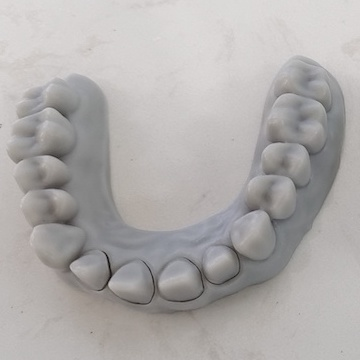What are the developments of 3D printing in the field of medical implants?
In today's advancement of medical technology, 3D printing technology has become a powerful tool in the field of medical implants. Its advantages in manufacturing various medical implants have become increasingly prominent, not only improving patient outcomes but also providing doctors with better tools and solutions.
(1) Advantages of 3D printing technology in the field of medical implants:
1. Personalized customization
Traditional medical implants are usually produced in a standardized manner and cannot meet the individual differences of each patient. With the help of 3D printing technology, medical implants can be customized according to the patient's specific anatomy and needs, ensuring better adaptation to the patient's body and improving treatment effects.

2. Accuracy and fidelity
3D printing technology can achieve high-precision manufacturing and can accurately print implants that match the patient's actual anatomy based on medical imaging data. This precision can reduce surgical risks, improve surgical success rates, and allow the implant to better integrate with surrounding tissue and reduce rejection.
3.Multiple material selections
Different medical implants may require different material properties, such as biocompatibility, strength, and flexibility. 3D printing technology allows flexible material selection and the combination of multiple materials in the same implant to meet the needs of different patients and provide more diverse treatment options.

4. Rapid manufacturing and customization
Traditional medical implant manufacturing usually takes a lot of time and cost, but 3D printing technology can achieve a fast and flexible manufacturing process, greatly shortening the time patients wait for surgery, especially for patients in emergency situations, and can provide more timely medical implants. treatment plan.
5. Continuous innovation and improvement
Due to the flexibility and customizability of 3D printing technology, the medical community is able to continuously innovate and improve, and design more advanced and powerful medical implants, thereby continuously improving patient treatment effects and quality of life.
6. Bioprinting and tissue engineering
The development of bioprinting technology will make it possible to regenerate human tissues and organs. By printing biomaterials and cells, human tissues with complex structures and functions can be produced, bringing new possibilities for organ transplantation and regenerative medicine.
7. Medical education and training
3D printing technology can be used to create high-fidelity human models for medical education and training. Medical students and doctors can use these models to conduct practical operations and surgical simulations to improve their technical level and surgical safety.
8. Low-cost medical solutions
Because 3D printing technology enables fast and flexible manufacturing processes and can use cheap raw materials, it can provide low-cost solutions for the medical field, especially in developing countries and resource-poor areas.
(2) Although 3D printing technology has many advantages in the medical field, there are also some disadvantages and challenges:
1. Biocompatibility and material selection
Some printing materials may have adverse reactions to human tissue, so special attention needs to be paid to the biocompatibility of materials during the manufacturing process of medical implants. In addition, the types of printing materials currently available are limited, and for some medical devices or implants with special needs, suitable materials may not yet be developed.
2. Manufacturing speed and efficiency
Although 3D printing technology can achieve rapid manufacturing, for some complex medical implants or devices, printing time may still be long. In some emergency situations, patients may not be able to wait long enough for printing, requiring healthcare facilities to maintain backup plans or find other solutions.
3. Manufacturing precision and quality control
Manufacturing precision and quality control during the 3D printing process is a challenge. Due to the layer-by-layer manufacturing method, quality problems such as poor inter-layer bonding and rough surfaces may occur, affecting the effectiveness and durability of medical implants or devices.
4. Regulations and Supervision
The manufacturing of medical implants and devices involves strict regulations and regulatory requirements to ensure their safety and effectiveness. For the application of 3D printing technology, regulatory agencies need to formulate corresponding regulations and standards, and strictly supervise and review it to ensure that it meets the requirements of the medical industry.
To sum up, 3D printing technology has significant advantages in the field of medical implants. It can provide patients with more personalized, precise and efficient treatment plans, while also providing doctors with better tools and technical support. Although 3D printing technology has great potential in the medical field, it also faces some disadvantages and challenges. With the continuous advancement of technology and the accumulation of application experience, I believe these problems will be gradually solved, and 3D printing technology will bring more innovation and changes to the medical industry.
We are Jiangsu Brozan Intelligent Technology Co., Ltd. Whether you need to replicate an existing anime figure, try out a novel design, or create a work of art, our 3D printing services will help you realize your vision. If you are interested in 3D printing technology, you might as well try it, maybe you will discover a whole new world.
If you are interested in stereolithography industrial-grade 3D printers, please contact us for more details.
Xenia
Whatsapp:+8615716101020
Email:xenia@brozan3d.com
